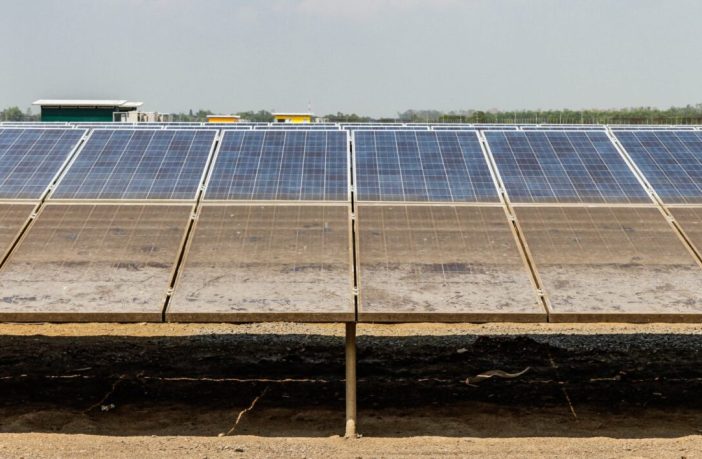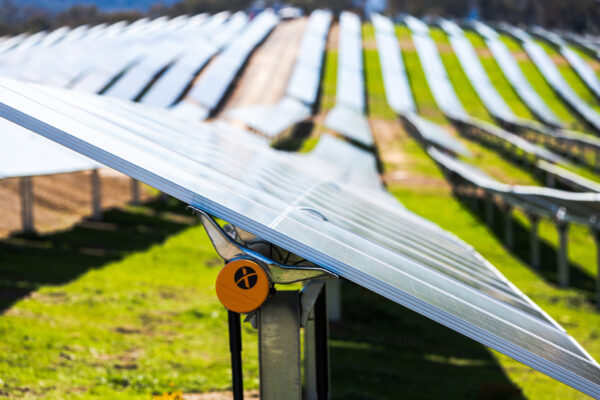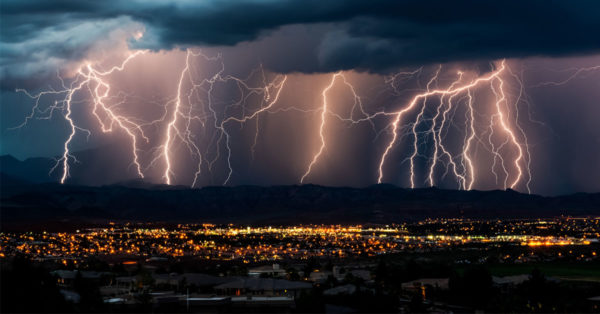- More than 25% of Australia’s energy generation currently falls into the three highest climate risk categories, according to the recently released Climate Risk Index from insurer Zurich and consulting firm Mandala Partners.
- That figure grows to 35% by 2050.
Solar, alongside natural gas, is far and away the most vulnerable of all the generation types, the Index noted. It found that for solar, 95% of dedicated sites were in one of the three highest risk categories due to susceptibility to events like storms and hail.
As Zurich’s APAC CEO, Justin Delaney, noted: “much of the focus to date has centred on the risk of the energy grid to climate change, rather than on the risk of climate change to the grid.”
But the climate is changing and unfortunately a grid based on renewable generation is vulnerable to these changes. How to future-proof Australian solar farms was discussed by representatives from insurance company AON, lender Commonwealth Bank, developer Engie and Energy Estate, contractor PCL, and equipment supplier Nextracker at All-Energy trade show in Melbourne in October. There was unanimous consensus among panelists that much more attention needs to be given to future-proofing in light of growing weather risks.
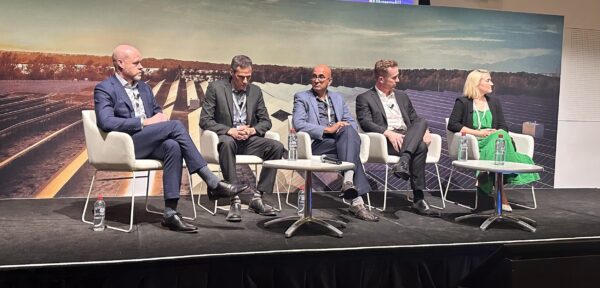
This is especially pertinent since a number of Australian states are putting Renewable Energy Zones (REZs) at the heart of their transition plans, and aggregating assets also aggregates risk.
Australia has already seen fire warnings around big energy nodes. Climate change is also anticipated to make parts of Australia more arid, meaning the problems of dust soiling and flooding are set to grow.
Solar’s biggest weather threat though is hail. “Hail is dwarfing everything,” Nextracker’s Vice President of Global Asset Management, Andrew Griffiths, said during that panel. “That’s become sort of the first order problem I think the industry needs to solve.”
From the south of Sydney to above Bundaberg in Queensland is Australia’s ‘hail alley’ – but the fact this coast is among Australia’s most populated stretches means renewable generation is needed here. Traversing this tension is only becoming tricker with some insurers refusing to cover for hail, or severely limiting their coverage. “From an insurance perspective, we’re definitely starting to see [a gap]develop,” said Pat Behan from insurer AON.
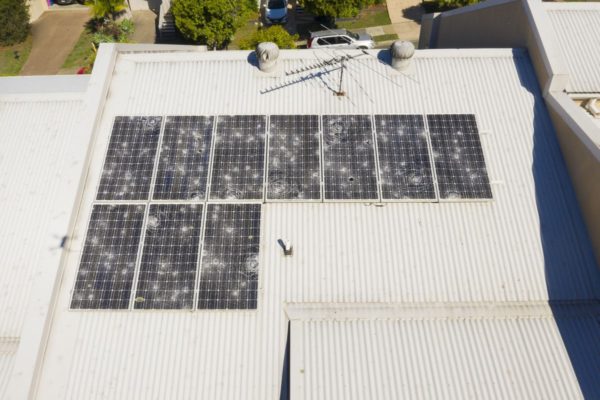
What insurance gaps and premiums indicate
Extreme hail, storms and other weather events will inevitably happen, probably with increasing regularity. This, in turn, will result in higher insurance premiums – which are already today threatening the bankability of some projects. “We certainly are seeing insurers that are now sort of either blanket carving out flooding and hail events or, or perhaps sort of taking a more limited approach to it,” Anna Hedgcock, Engie’s Head of Portfolio Growth and Commercial in Australia, said.
Or, as Gopinath Govindraj, Country Manager at construction company PCL, put it: “it’s like seeking insurance for pre-existing medical condition, which means that no coverage, or partial health [coverage]and then the gap risk is left for someone else to foot.” These gaps can sometimes equate to hundreds of millions of dollars, with Behan flagging a $300 million solar farm which could only get hail coverage up to $20 – 30 million.
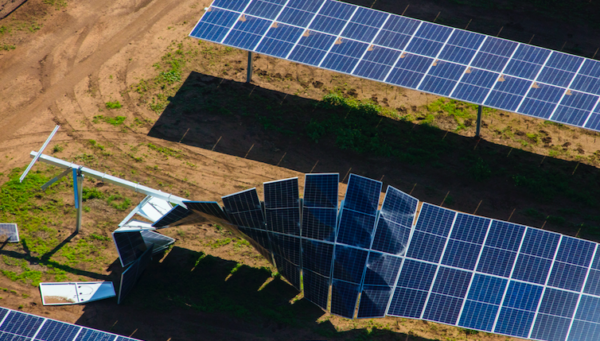
While weather risk and future proofing are front of mind for insurance companies, signified by widespread changes to coverage and growing premiums, other stakeholders have spent a lot less time with these questions. Simon Currie, Cofounder & Chief Projects Officer at renewable developer Energy Estate, pointed out he has never been asked by a bank about a project’s future-proofing strategies.
Hedgcock also noted that while global giant Engie has spent a lot of time looking at climate modelling and data, that information isn’t necessarily extrapolated to assess potential future risks on individual projects. While there is certainly a growing maturity, most industry stakeholders have a ways to go to ensure projects are as future-proof as possible, the panel agreed.
Solutions
While, of course, no one controls the weather, there are a number of design and operational choices that can been made to minimise project risk. Opting for technologies that, say, are designed to address particular weather events and fitted with responsive software is something the Commonwealth Bank’s Executive Director of Natural Resources & Energy, Neil Fraser, described as “absolutely crucial.”
“From a bankability perspective, we would far prefer to see the mitigation or risk minimisation strategy than having to go for insurance rectifications,” Fraser added.
Technology
This year, Nextracker launched its Hail Pro solution which the company says automatically moves modules into an optimised vertical stow position in about 60 seconds across an entire plant. The software can be adjusted based on the project owner’s requirements and the kind of hail predictions they feel comfortable with. In other worse, the automated stowing can be adjusted to be more or less risk averse.
Nextracker’s Andrew Griffiths also pointed to shifts in the solar module market to address weather risks. “We’ve seen thicker modules now for glass, people going way beyond the IEC [International Electrotechnical Commission] testing standards for modules, which I think is important as we’re seeing these severe storms, or convective storms causing larger size, larger diameter, hail stones.” Hail is becoming a particularly fierce problem in the US, where Nextracker is based. Hail related losses exceeded USD 1 billion ($1.5 billion) there in 2021 alone.
Weather stations
Panelists also agreed more weather stations close to projects and particularly throughout Renewable Energy Zones would be helpful to ensure weather data accuracy. “We are going to be clustered around these areas, we’ve actually got to go and collectively invest in the weather stations, so that we’re getting as much predictive analytics as we can… and that helps our communities as well,” Energy Estate’s Simon Currie said.
PCL’s Gopinath Govindraj said that from his own experience, localised weather stations are important, noting situations where the nearest station might be over 20 kilometres away and predicts storms which in fact never hit the project area.
Self-insurance
Self-insuring was also raised as a possible path away from skyrocketing insurance premiums. “While certainly self-insurances is one option, that’s not, I think, really easy for many developers to do, and I think you really have the portfolio to be able to do that,” Engie’s Anna Hedgcock said.
Discuss early and openly
There is no easy solution to weather risk, nor can any project be certain about severity. For this reason, panelists united around the importance of having frank discussions early across the entire stakeholder chain.
As it stands, AON’s Pat Behan says the discussions and relationships have tended to be advisorial, but he wants to see them become more collaborative. To his eyes, that means doing things like explaining to the raft of stakeholders how technological solutions like hardware and software function. “That is working with the financiers, the lenders, to kind of demonstrate how these products work, and how they work in conjunction with each other,” Behan said.
He also flagged the intractability of weather risk in a rapidly changing climate might mean insurance products change. “It might look a little bit different than what a traditional insurance product will be, but it’ll end up providing the same level of compensation at the end of the day. That feeds back into that that bankability as well,” he added.
Panelists said fostering relationships between insurers and equipment manufacturers and developers could lead to better leveraging of important information. That is, insurers have huge amounts of data from their global books outlining the types of weather events and losses in particular areas. This information could help both manufacturers as well as project developers make more informed decisions in the product development and design stages respectively.
Commercial considerations means contractors and developers working on projects within the same area are rarely in discussions with one another, Currie pointed out. Given weather events will likely impact all projects in the same vicinity, Currie said industry needs to breed more openness on the topic, and on mitigate strategies, even among competitors.
Developers and project owners also need to become more transparent about how they are assessing their projects. As PCL’s Gopinath Govindraj said: “We don’t know if all the location risks, given the weather challenges, are factored into the business model or strictly based on providing convincing CAPEX and OPEX model to the lenders.”
Following these discussions, there needs to be greater recognition around the value of future-proofing projects, Engie’s Hedgecock noted. “As developers, I think we do want to employ best practices and future projects,” she said.
“But the reality is that the the returns on these projects are on a knife edge – it’s so hard to get these projects up. So if we’re going to make an investment like that [future-proofing via design, operational and technology choices], then I want to know that it’s going to be recognised in the terms I get from all the other stakeholders,” she added.
Risk sharing
This topic of risk sharing – of better allocating risk along the whole chain – was paramount in the discussion. Extreme weather impacts everyone – grid operators, consumers, project proponents, insurers and lenders, yet many felt the project contractors and owners had to shoulder all the responsibility for mitigation and, in the event of an incident, also the losses.
“There comes mitigation plans, due diligence, product selection, technologies, division – everything is at this stage as we stand,” PCL’s Gopinath Govindraj said. “There is a misalignment of lack of equitable risk understanding and allocation.”
Energy Estate’s Simon Currie echoed this, saying: “I cannot believe the attitude that people are happy to have EPC [engineering, procurement and construction] contractors go under and not make decent margins. We’re gonna kill ourselves guys – we’ve got to fix us at the net, we’ve got to get the risk allocation right.”
“They [contractors]have to make money and you can’t expect them to take unreasonable risks,” Currie added.
Off-takers, those signing the power purchasing agreements, also need to mature their understanding of the risks, panelists agreed. A race to the bottom on price only undercuts project quality. Panelists agreed there was a dire need to educate off-takers that a cheaper project is a more vulnerable project, which ultimately is not in their interest either.
“We have to be as industry prepared to spend the money to build better projects,” Currie said. “Particularly if we’re talking about 35 year assets, which will catch up on us into the future,” he added.
“I think this goes back to the off-taker being in that conversation as well, because ultimately the revenue that you’re going to drive off your project is going to allow you to do different things at that design and build stage,” Behan added. “If you’ve got a little bit more margin… you can do more in terms of that upfront development.”
Industry’s ability to work through these tricky problems with maturity also has stakes beyond Australia’s borders, Currie noted. “We are massive fans of Australia as an export hub… If the Japanese and the Koreans are relying on us, how will we continue to be a trusted supplier if we haven’t thought about how we mitigate extreme weather events?”
Author: Bella Peacock
This article was originally published in pv magazine and is republished with permission.












